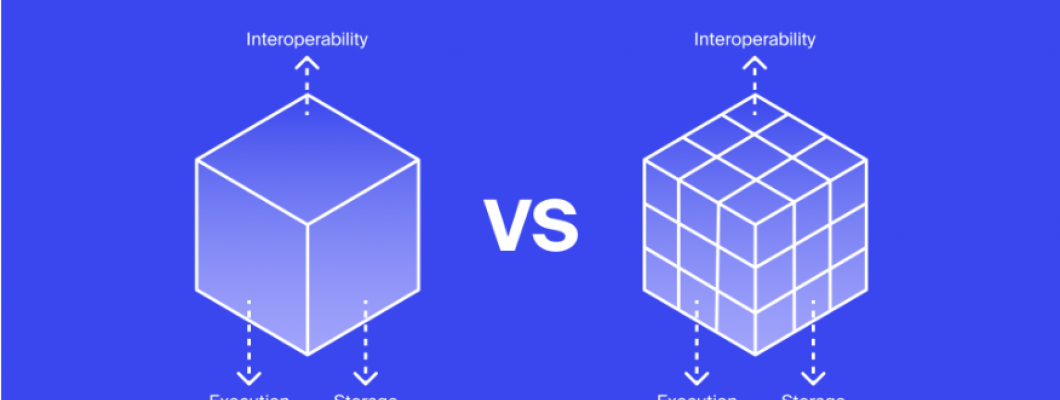
Blockchain technology is rapidly evolving, and a critical debate has emerged: Should blockchains remain monolithic or transition to a modular structure?
The answer could define the future of scalability, decentralization, and security in blockchain networks.
In this blog, we will cover:
What are Monolithic and Modular Blockchains?
Key Differences Between the Two Architectures
Benefits & Challenges of Each Approach
Which One is Better for the Future of Blockchain?
What is a Monolithic Blockchain?
A monolithic blockchain is an all-in-one system where the execution, consensus, and data availability layers are tightly integrated. This means that a single blockchain handles everything, from processing transactions to storing data and reaching consensus.
Examples of Monolithic Blockchains:
Bitcoin – The original blockchain, designed for security and decentralization but struggles with scalability.
Ethereum (Pre-Merge) – Before moving to Ethereum 2.0, Ethereum functioned as a monolithic blockchain.
Solana – A high-speed blockchain that maintains a monolithic design.
Advantages of Monolithic Blockchains:
Strong Security: All transactions are validated within the same system.
Simpler Development: Developers work within a single framework without relying on external solutions.
Decentralization: Ensures all validators participate equally in securing the network.
Challenges of Monolithic Blockchains:
Scalability Issues: As usage grows, processing transactions within one system leads to congestion (e.g., Ethereum gas fees).
High Hardware Requirements: Validators need powerful infrastructure to process and store all blockchain data.
Less Flexibility: Changing one component requires upgrading the entire blockchain.
What is a Modular Blockchain?
A modular blockchain separates key functions into independent layers, allowing each component to scale individually.
Key Layers in Modular Blockchains:
Execution Layer – Handles smart contracts and transaction processing (e.g., Ethereum Layer 2 solutions).
Consensus Layer – Manages network validation and security (e.g., Tendermint in Cosmos).
Data Availability Layer – Ensures transaction data is stored efficiently (e.g., Celestia).
Examples of Modular Blockchains:
Ethereum 2.0 + Layer 2 (Arbitrum, Optimism, zkSync) – Moves execution off the main Ethereum chain for better scalability.
Cosmos – Uses Inter-Blockchain Communication (IBC) for modular development.
Celestia – A blockchain-focused solely on data availability while leaving execution to external chains.
Advantages of Modular Blockchains:
Better Scalability: Each layer scales independently, preventing congestion.
Flexibility: Developers can choose execution, consensus, and data availability providers.
Lower Costs: Reduces on-chain transaction fees with Layer 2 solutions.
Challenges of Modular Blockchains:
More Complexity: Requires coordination between multiple layers.
Interoperability Issues: Different chains need standardized protocols for seamless communication.
Security Trade-offs: Some Layer 2 solutions rely on centralized components.
Modular vs. Monolithic Blockchains: Key Differences
Which Approach is the Future?
Both monolithic and modular blockchains have their place in the industry. However, modular blockchains are emerging as the preferred choice for scalability and flexibility.
Why Modular Blockchains Are the Future:
Scalability Without Compromising Security – Layer 2 solutions like Arbitrum and zkSync enhance transaction speeds while keeping Ethereum’s security intact.
Cross-Chain Interoperability – Cosmos and Celestia enable multiple blockchains to communicate seamlessly.
Cost Efficiency – Modular structures reduce gas fees by moving execution off the main chain.
Will Monolithic Blockchains Still Exist?
Yes! Some blockchains, like Solana, prioritize speed and performance in a monolithic design. However, these chains face challenges in decentralization and long-term scalability.
Conclusion:
Monolithic blockchains are simpler and more secure but struggle with scalability. Modular blockchains provide better efficiency and flexibility but require additional layers for execution and data management.

Leave a Comment